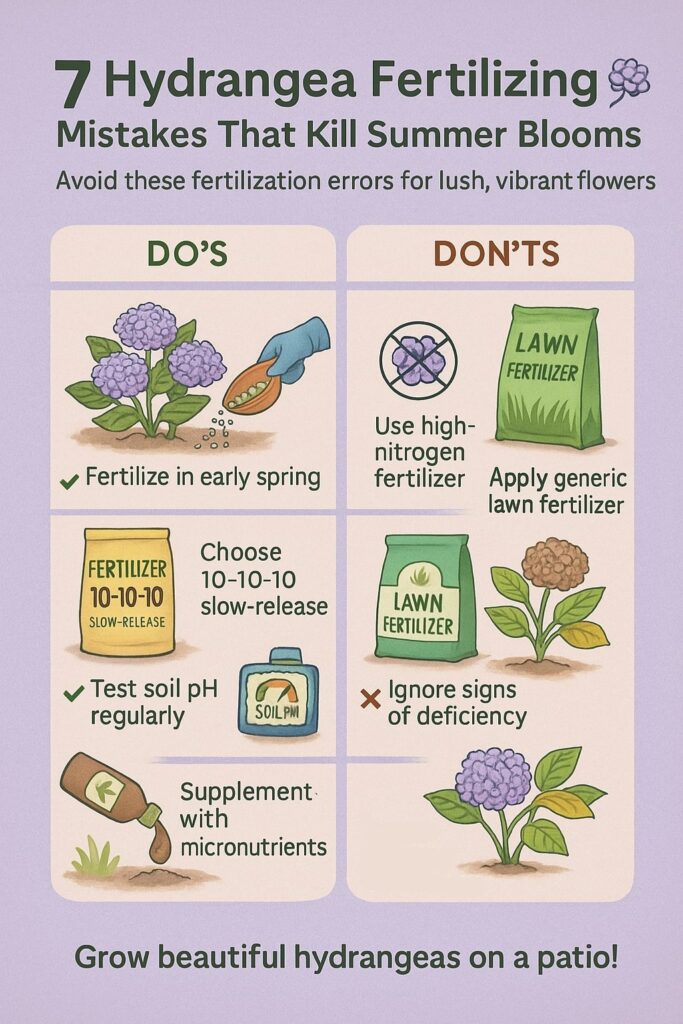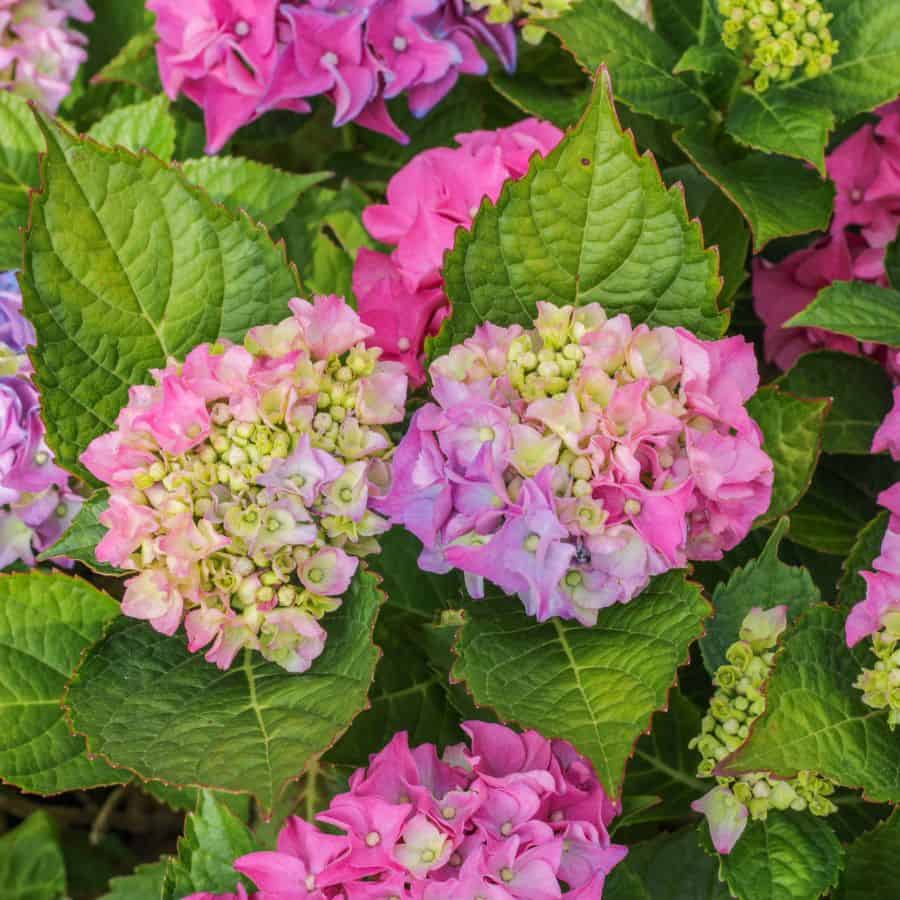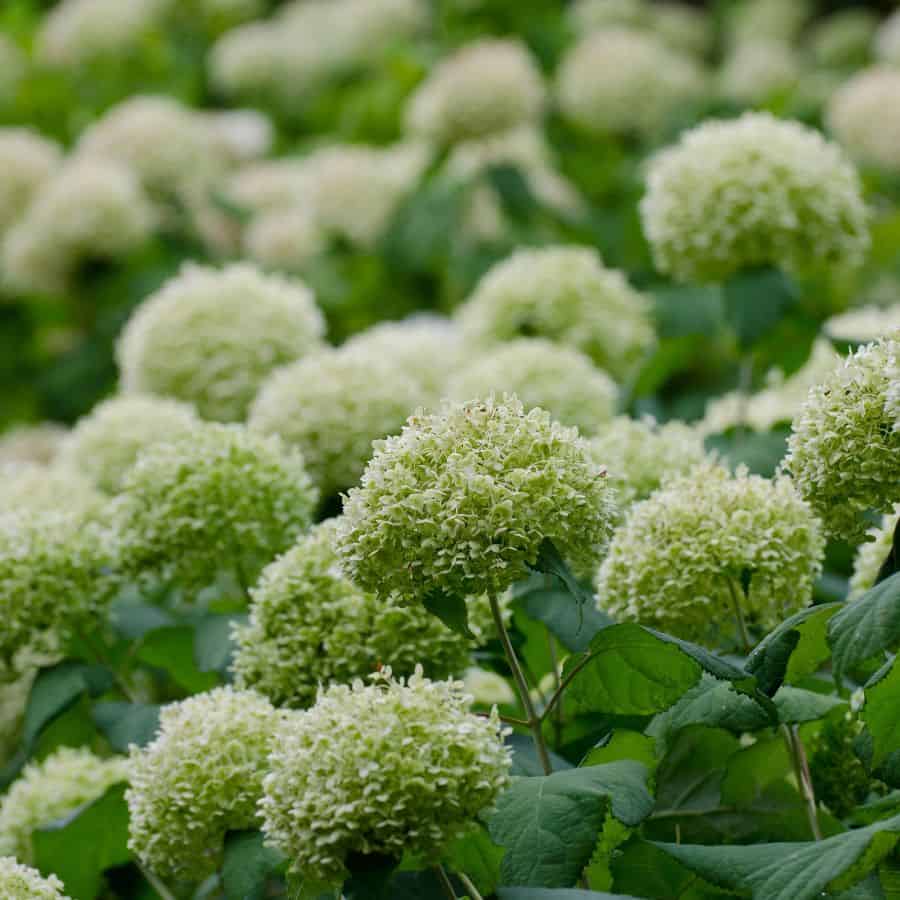
I’ll be honest – I thought I was a decent gardener until my neighbor’s hydrangeas started outshining mine every summer. Her bushes were bursting with dinner-plate-sized blooms while mine looked like they were barely surviving.
The secret? I’d been sabotaging my own plants with terrible fertilizing habits.
Here’s what shocked me most: 78% of gardeners unknowingly stunted their hydrangeas’ blooming potential with common fertilization mistakes. But once you understand what these stunning shrubs crave, you’ll be amazed at the transformation.
The Hidden Truth About Hydrangea Nutrition
Think of hydrangeas like elite athletes. They need a perfectly balanced diet to perform at their peak. Just like you wouldn’t feed a marathon runner nothing but protein bars, your hydrangeas need more than just generic plant food.
The N-P-K trio (nitrogen, phosphorus, potassium) forms the foundation, but here’s where most people go wrong: they treat all three equally.

Nitrogen builds those gorgeous green leaves, phosphorus powers the spectacular blooms, and potassium acts like a plant’s immune system.
But the real game-changer? Those often-ignored micronutrients like iron, magnesium, and calcium. Without these, your hydrangeas are like a car running on three cylinders – technically functioning, but nowhere near their potential.
5 Fertilizing Mistakes That Are Killing Your Blooms
1. The Nitrogen Overload Trap
This is the big one – I was guilty of this for years! Too much nitrogen creates what I call “the cruel joke effect.” Your hydrangeas look absolutely lush and vibrant with massive leaves, but come bloom time? Cricket sounds.
It’s like the plant gets so excited about growing leaves that it forgets its main job. The recommended ratio should never exceed 10% nitrogen unless you want a green leafy monument instead of flowers.
2. Using Generic “One-Size-Fits-All” Fertilizer
Here’s something that’ll surprise you: using regular lawn fertilizer on hydrangeas is like feeding a hummingbird hamburgers. Sure, it’s food, but it’s entirely wrong for what they need to thrive.
Flowering plants need specialized nutrition with balanced N-P-K ratios and those crucial micronutrients. Generic fertilizers often lack iron and magnesium. Two elements that can make or break your bloom production.
3. Terrible Timing That Sabotages Growth
I used to fertilize whenever I remembered – usually late summer when I noticed the plants looking tired. Wrong move! This is like trying to fuel up a race car after it’s already crossed the finish line.
The golden window is early spring when buds are just starting to swell, and optionally mid-summer if your plants are heavy feeders. Late fall fertilizing? That’s practically plant abuse. You’re encouraging tender new growth right before winter hits.
4. Ignoring the pH Game-Changer
Here’s where hydrangeas get really interesting. They’re like natural mood rings for your soil! The pH doesn’t just affect bloom color (though that’s pretty cool); it actually determines whether your plants can access the nutrients you’re giving them.

You get those stunning blue blooms in acidic soil (pH below 6). Alkaline soil (pH above 7) produces gorgeous pinks. But here’s the kicker: wrong pH levels can lock up nutrients even if you’re fertilizing perfectly.
5. The One-Size-Fits-All Variety Mistake
Not all hydrangeas are created equal. Something I learned the hard way when my bigleaf hydrangeas threw a tantrum while my panicle hydrangeas thrived with the same treatment.
Bigleaf hydrangeas are the drama queens of the hydrangea world; super sensitive to pH changes and fertilizer strength. Panicle hydrangeas? They’re the easy-going cousins who adapt to almost anything.
The Breakthrough Method That Actually Works
Ready for the method that transformed my garden? Start with a slow-release granular fertilizer with a 10-10-10 ratio in early spring. Think of it as a time-release vitamin for your plants.
Apply it around the drip line (not against the trunk), water it in thoroughly, and then step back. The slow-release formula feeds your plants gradually over months, preventing those boom-and-bust cycles that stress the plants.
For the overachievers (and I mean this in the best way), supplement with liquid fertilizer every 4-6 weeks during the growing season. But watch for signs of overfeeding: burnt leaf edges are your plants screaming “too much!”
The DIY Secret Weapon
Want to know my secret weapon? A homemade liquid fertilizer that costs pennies and works like magic. Mix 1 tablespoon each of Epsom salt, baking soda, and ammonia in a gallon of water.
This powerhouse combination provides magnesium (from Epsom salt), helps with nutrient uptake (baking soda), and delivers gentle nitrogen (ammonia).
Use it as a foliar spray or soil drench every 4-6 weeks – your hydrangeas will thank you with spectacular blooms.
Color-Changing Magic Tricks
Want to blow your neighbors’ minds? You can manipulate bloom colors through strategic fertilization. For electric blue blooms, add aluminum sulfate to acidify the soil. Dreaming of soft pink flowers? Garden lime will increase alkalinity.

But here’s the important part: test your soil first! I once over-corrected so badly that my poor hydrangeas didn’t bloom for an entire season. Gradual changes win the race every time.
Your Action Plan for Spectacular Blooms
Start monitoring your hydrangeas like a plant detective. Yellow leaves might signal nitrogen deficiency, while poor blooming often indicates phosphorus problems. Stunted growth? Check your potassium levels.
Get a soil test every 2-3 years. It’s like a health checkup for your garden. This simple step prevents you from guessing what your plants need and ensures you’re not wasting money on unnecessary fertilizers.
The transformation won’t happen overnight, but by next summer, you’ll be the neighbor with the jaw-dropping hydrangeas that everyone stops to admire.
Trust me, there’s nothing quite like the satisfaction of watching your properly fed hydrangeas explode into spectacular bloom.